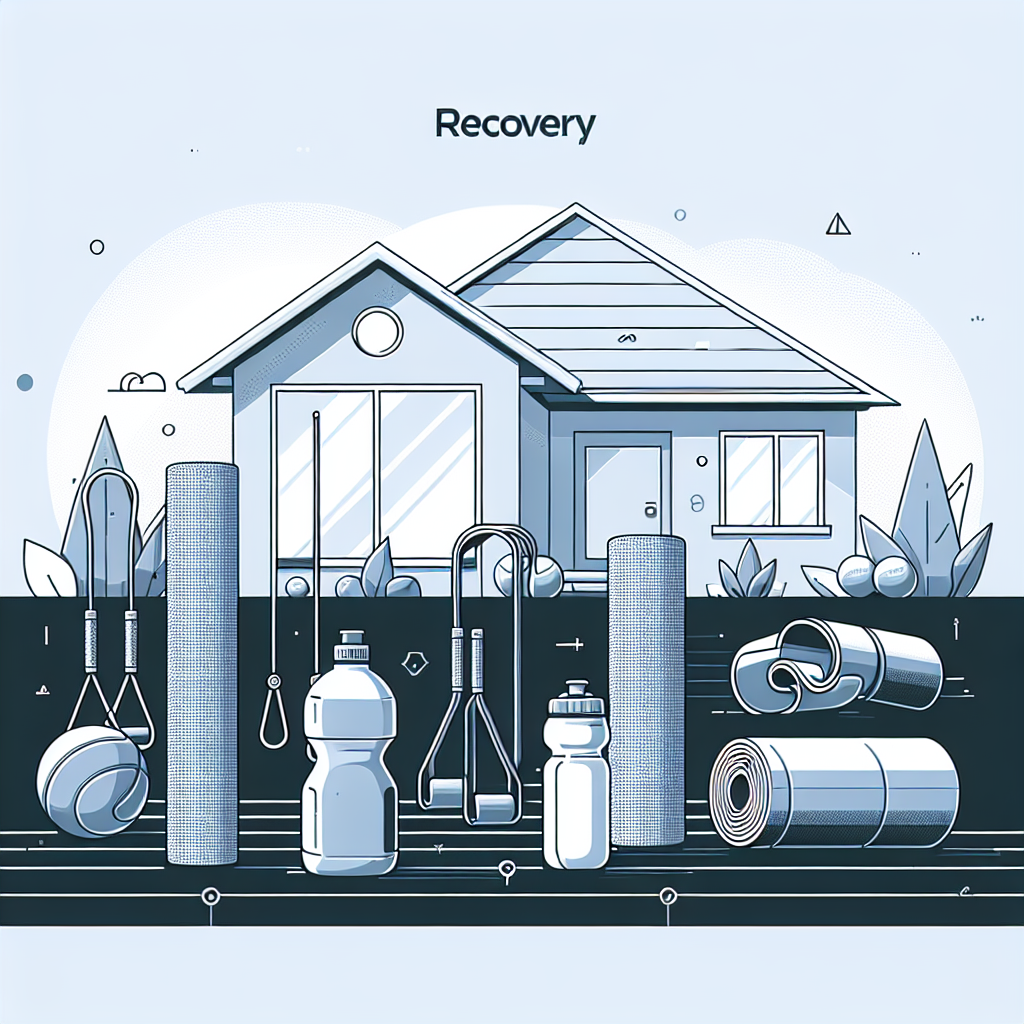
Simple Recovery Routines After Home Training
Share
Simple Recovery Routines After Home Training
Building a workout habit with a home gym is empowering, but many forget that what you do after exercising is just as vital as the sweat session itself. To get the most from your strength and cardio routines, it’s crucial to embrace effective home gym recovery routines. Recovery not only relieves soreness but also accelerates muscle growth, reduces injury risk, and keeps your motivation high for the next session.
Why Recovery Matters After Home Workouts
If you’ve invested in a dedicated training corner at home—perhaps with a robust system like the Multifunction Home Gym Weight Training Workout Station White—you already understand the value of regular exercise. But many overlook post-workout recovery, mistakenly thinking it’s a luxury instead of a necessity. Proper recovery is key to preventing plateaus, reducing fatigue, and boosting overall fitness results. Implementing structured home gym recovery routines will help you make steady progress while minimizing downtime due to aches or injuries.
Signs You Need to Prioritize Recovery
Your body gives warning signs when it’s time to focus more on recovery. Common signals include:
- Persistent muscle soreness lasting longer than 48 hours
- Unusual fatigue or difficulty sleeping
- Decreased motivation or performance slumps
- Recurring minor injuries
- Elevated resting heart rate
Listening to your body and responding with appropriate recovery strategies ensures you can maintain a consistent and effective home workout routine.
Components of Effective Home Gym Recovery Routines
Building a recovery routine doesn’t have to be time-consuming or complicated. Consider adding these simple steps to your post-workout ritual:
-
Cool Down Movements
After your last rep or set, dedicate at least 5-10 minutes to gentle movements like walking, cycling on a stationary bike, or light jumping jacks. This helps your heart rate return to normal and prevents blood pooling in the muscles.
-
Stretching and Mobility Exercises
Dynamic or static stretching increases flexibility, promotes circulation, and reduces muscle tightness. Target all major muscle groups worked during your session, holding each stretch for 20-30 seconds. Incorporate mobility exercises like arm circles or hip rotations for added benefit.
-
Self-Myofascial Release
Using a foam roller or massage ball, apply gentle pressure to tight areas such as calves, hamstrings, and upper back. This practice boosts blood flow and helps break up muscle knots from intense sessions on your home gym station.
-
Hydration and Nutrition
Post-workout, rehydrate with water or a recovery drink and enjoy a balanced snack containing protein and carbohydrates within an hour. This supports muscle repair and glycogen replenishment.
-
Rest and Sleep
Quality rest is the ultimate recovery tool. Aim for 7-9 hours of sleep per night, and consider short power naps after intense home gym routines for additional repair.
Sample Post-Home Gym Recovery Routine
Wondering how to put all the elements together? Here’s a sample recovery plan to follow after a full-body strength session on a versatile station like the Multifunction Home Gym Weight Training Workout Station White:
- 5 minutes walking in place or at a slow pace on a treadmill
- Full-body stretching sequence (neck, shoulders, back, arms, legs)
- Foam rolling: calves, quads, glutes, upper back
- 30g protein shake and a banana or other light snack
- Shower or warm bath for relaxation
- Light screen-free downtime or reading to wind down
- Uninterrupted, restful sleep
Adjust this routine based on your fitness goals and the intensity of your workout.
Tools and Techniques to Boost Recovery
While basic home gym recovery routines require little equipment, consider incorporating these helpful tools for enhanced results:
- Foam rollers and massage sticks to release tension
- Massage guns for targeted relief
- Resistance bands for deep stretching
- Hot/cold gel packs for easing soreness
- Sleep masks, blackout curtains, or white noise machines for sleep optimization
Remember, recovery isn’t just about feeling better— it’s an essential investment in long-term health and fitness progress.
The Role of Consistency and Active Recovery
Consistency matters in both exercise and recovery. Develop habits such as a cool-down walk after every workout, regular stretching, and staying well-hydrated throughout the day. Don’t be afraid to schedule active recovery days with gentle activities like yoga, tai chi, or a brisk walk. These keep blood flowing and aid muscle repair without causing new fatigue.
Optimize Recovery with the Right Home Gym Equipment
Your recovery can be more efficient when you have the right gear. Investing in a multi-use station like the Multifunction Home Gym Weight Training Workout Station White allows you to target all muscle groups efficiently, reducing the tendency to overwork specific areas and promoting balanced strength development. This means your recovery processes become more targeted and comprehensive too.
This all-in-one station streamlines your routine and your recovery, as you’ll be able to balance push, pull, and lower body exercises seamlessly—reducing your risk of strain and supporting proper muscular adaptation. Explore more about this innovative station here and level up not only your workouts but your recovery protocol.
Conclusion
Effective home gym recovery routines act as your secret weapon for better results and greater enjoyment from your fitness journey. Whether your goal is muscle gains, fat loss, or overall wellness, remember to cool down, stretch, hydrate, fuel, and rest after every workout. Invest in the right equipment like the Multifunction Home Gym Weight Training Workout Station White to support balanced, sustainable, and satisfying progress at home.
Meta description: Discover easy home gym recovery routines to boost results, prevent injury, and accelerate muscle growth after workouts. Essential tips and tools included.
